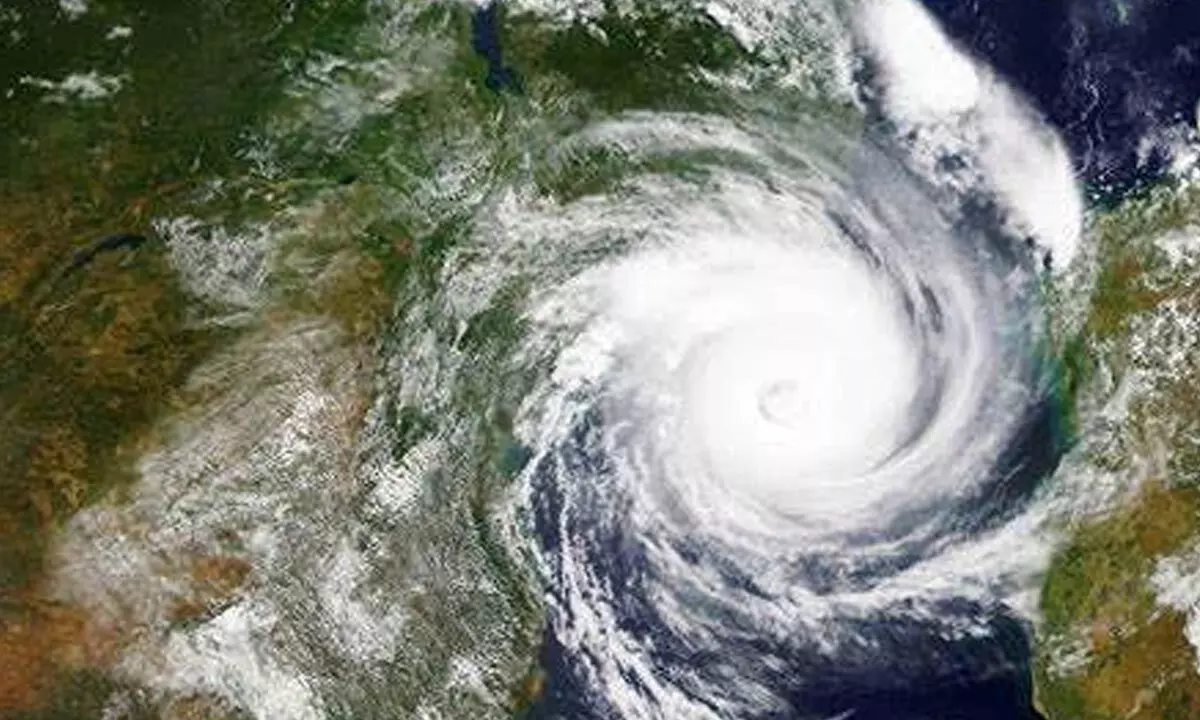Live
- Bengaluru techie loses Rs 11.8 cr
- Former SC judge Ramasubramanian is new NHRC chief
- Roopasri strives to secure place in hearts of theatre lovers
- TG to showcase T-Culture in big way at Bharat Parv
- Bankers told to be part of Telangana Rising
- ISTS wins ‘Excellence in Women’s Engineering Education’ award
- Hyderabad loses its Shaan-e-Benegal
- Bangladesh requests India to extradite Sheikh Hasina
- Women, elderly register for AAP 's welfare schemes
- Cyber Security Mela -2024 held
Just In

A team of researchers from Indian Institute of Technology (IIT) of Madras and Hyderabad along with those from Germany's Potsdam Institute of Climate Impact Research (PIK) used a novel, data-driven approach to explore the problem of tropical cyclones merging with each other.
Chennai: A team of researchers from Indian Institute of Technology (IIT) of Madras and Hyderabad along with those from Germany's Potsdam Institute of Climate Impact Research (PIK) used a novel, data-driven approach to explore the problem of tropical cyclones merging with each other.
Over the years, tropical cyclones have ravaged the coastlines of not only the Indian subcontinent, but the whole of southern Asia, Australia, and the tropical regions of the Americas, to name a few.
To date, the mechanisms behind the formation and propagation of these weather extremes and their interactions with the neighbouring weather systems lack a sound understanding and are active areas of research and debate among meteorologists worldwide.
In the research, the team aimed to understand what happens when two tropical cyclones, in the same hemisphere, are close to each other.
In this case, as one cyclone starts affecting the other and vice-versa (this interaction is referred to as “Fujiwhara interaction” by meteorologists), there can be number of possible outcomes -- their trajectories and/or strengths may suddenly change, or they can merge to form a much stronger cyclone.
Such binary interaction of cyclones has neither been completely understood nor fully incorporated in weather prediction models, and therefore leads to erroneous forecasts. Such inaccurate forecasts increase the threat to life and property due to unpreparedness caused by misinformation and the lack of early warning.
“Analysing cyclone interactions using the novel framework pioneered in this study has the potential to improve the accuracy of the early warning signals provided by meteorological organisations to the government so that they can take pre-emptive and early action to reduce the impact of such disasters,” said Prof. RI. Sujith, Department of Aerospace Engineering, from IIT Madras, in a statement.
A complex network encodes the pattern of interaction of a complex system, and can be directly applied to study the Fujiwhara interaction between two cyclonic vortices.
Indicators derived from this methodology were found to clearly distinguish the different stages of mutual interaction between two cyclones and provide an early indication of cyclone merger, often better than conventionally used indicators such as the separation distance between two cyclones.
“We believe that this network-based approach can be used to study binary cyclone interactions from observational or model-based relative vorticity data to obtain better insights on the possibility of cyclone merger. It paves the path to analyse such highly unusual/rare events in which sudden alteration of cyclone tracks or re-strengthening occurs, on a case-by-case basis, and facilitate improved prediction of cyclone tracks and the fate of such interactions,” said lead author Dr Somnath De, from IIT Madras’ Department of Aerospace Engineering.
“Data-driven methods for prediction of extreme weather events have a unique advantage since they allow one to identify critical patterns in the evolution of such weather events that are elusive to traditional methods,” added Dr. Vishnu R. Unni from IIT Hyderabad.
Their findings are published in Chaos: An Interdisciplinary Journal of Nonlinear Science.

© 2024 Hyderabad Media House Limited/The Hans India. All rights reserved. Powered by hocalwire.com







